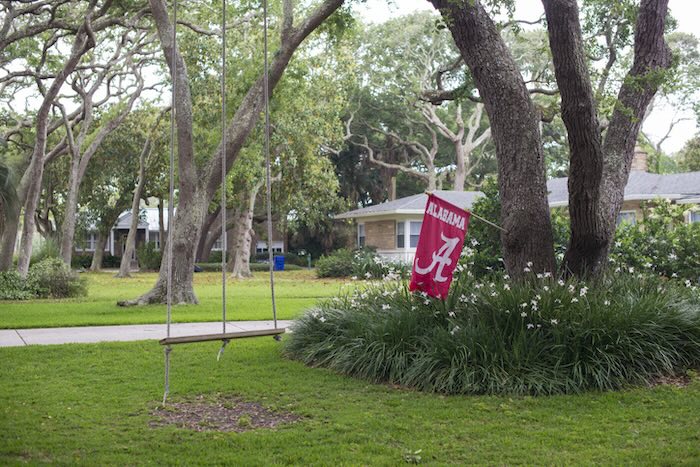Landlords can’t plan for every challenging moment while renting out property. But just like you protect your car and your health with insurance, landlords in the Yellowhammer state can protect their properties with Alabama landlord insurance.
But why do you need insurance specific to landlords? What events does it cover? How do you choose which insurance is right for your properties? In this guide, we’ll review those questions and more!
Key Takeaways
- There are three tiers for landlord insurance, each covering a different set of risk factors (or “perils”) at progressively more expensive premiums.
- When considering landlord insurance, Alabama property owners should carefully weigh their specific property risks and find a policy covering as many risk factors as possible.
- If you’re in the market for landlord insurance in Alabama, you have several high-quality choices, including Steadily, a company dedicated to providing landlord insurance.
Alabama Landlord Insurance: Why It’s Essential
Landlord insurance (which is different from renters insurance) protects landlords from losing income due to various risks.
As you know, Alabama landlords face a variety of risk factors when owning property, including hurricanes, tornadoes, vandalism, crime, and other liabilities that could impact earnings and the long-term viability of a property.
Landlord insurance can help mitigate these risks and, depending on the coverage you select, can provide relief for damages and even replace loss of rental income.
Types of Landlord Insurance Coverage
Just like auto or health insurance, landlord insurance has various coverage types. Each tier, which we’ll briefly outline, covers different risk factors and has different price points.
- DP-1: As the most basic policy tier, DP-1 coverage includes nine damage types (called “perils”), like fire, lightning, explosion, wind, and hail. Policies at this level will also only pay out in “actual cash value,” which factors depreciation into the payout.
- DP-2: At this tier, more perils are included in the coverage, including vandalism, freezing pipes, structure collapse, and glass breakage. While liability coverage isn’t typically included at this level of coverage, fair rental value is often a part of this kind of policy. Fair rental value will cover the fair value of rent if the rental unit is rendered uninhabitable because of one of the listed perils.
- DP-3: The most expensive policy type, DP-3 is an open peril policy, which means it will cover nearly all damage-causing events except those explicitly listed in the policy documentation. Many DP-3 policies also include some coverage for the landlord’s personal belongings in the home but not the tenant’s belongings. DP-3 policies also pay the full replacement cost value of any damage without factoring in depreciation.
How to Choose the Right Landlord Insurance in Alabama
Selecting the right Alabama landlord insurance might seem overwhelming, with multiple vendors to choose from, several policy types, and an ever-changing rental market. But there are a few things to remember that might make it easier to pick the right coverage type and provider.
- Take stock of your property’s risks. Different coverages or providers might be better suited depending on where the property is physically located or what features it contains (like a pool or fireplace).
- Determine the coverage needed. With three general tiers of coverage and many add-ons available, shop around to find the best rates for the package you need.
- Get multiple quotes. It never hurts to do the research and legwork to find the best rates for the best coverage.
- Compare providers. Not all providers are equal. In the next section, we’ll examine some of the top Alabama landlord insurance companies.
Top Landlord Insurance Providers in Alabama
Alabama property owners can choose from plenty of options for landlord insurance, but not all of them are created equal. Here are a few providers for you to dig into more:
Steadily
We’re such big fans of Steadily Landlord Insurance that we’ve partnered with them to provide excellent coverage to landlords. Boasting stellar reviews on Trustpilot, landlords can expect extraordinary customer service and competitive rates.
Pros
- Steadily only offers landlord insurance, meaning they’re highly specialized and positioned to provide expertise and results
- Wide range of policy types and coverage add-ons for complete property protection
- Incredible customer service reviews
Cons
- Not a one-stop-shop for insurance, so bundling with other insurance coverages isn’t available
Kin
Kin offers different kinds of home insurance, including homeowners and landlord insurance. Add-ons are available for more specific risk coverage.
Pros
- Sells directly to consumers instead of through agents, which can keep premium costs lower than other companies
- Offers multiple policy types for landlords with properties in higher-risk environmental zones
Cons
- Limited reach across the US
- No bundling opportunities since their highly specialized
State Farm
As a nationally recognized brand, State Farm has provided insurance of all types to customers for years.
Pros
- Customers can bundle landlord insurance with their other insurance policies, like car, life, and business insurance
- Comprehensive base policies with many add-ons available to customize your coverage
Cons
- Online reviews leave a lot to be desired
- High rates across the board
Farmers
Not just a catchy commercial jingle, Farmers Insurance is well-established and available nationwide.
Pros
- Years of experience allow Farmers to offer thoughtful advice on policy and coverage types landlords need
- Bundling is available for landlords that already use Farmers for other insurance policies
Cons
- Landlords may feel like a number and not a name because of their large customer base
- Higher cost than most other providers
Obie
Obie, one of the new players in the market, has been around since 2017 and offers policies nationwide.
Pros
- Quick access to quote and sign-up with no upsells to other insurance policies
- Available nationwide for property managers with rental units in multiple states
Cons
- Customer service is only available during the week and during business hours
- Some customers report problems resolving claims
Cost of Landlord Insurance in Alabama
The average monthly cost of landlord insurance for Alabama residents is around $150 per month or nearly $1800 per year. However, several factors could increase or decrease the cost.
- Location: If a property is in a flood zone or closer to the coastline, landlord insurance could increase due to flooding or the risk of hurricane damage.
- Property size: The larger the property, the higher the landlord’s insurance premium.
- Property condition: The age or physical condition of the property can play a significant factor in coverage costs.
How TurboTenant Can Help
TurboTenant is a best-of-breed property management software designed to make landlords’ lives easier and more efficient. While we don’t offer landlord insurance at TurboTenant, we have partnered with Steadily to ensure our landlords’ protection when the unexpected hits.
TurboTenant lets landlords collect rent payments online, perform comprehensive tenant background checks, and create lease agreements for all 50 states. It also integrates with rental-specific accounting software, helping landlords reduce tax time stress.
So, sign up for a free account today and see how TurboTenant can help you improve your property management.
Alabama Landlord Insurance FAQs
How much is landlord insurance in Alabama?
The cost of Alabama landlord insurance can vary significantly based on a number of factors, but the average yearly cost is around $1800.
Can a landlord require renters insurance in Alabama?
While there are no state laws requiring renters to have insurance, landlords can require renters to purchase their own insurance and add that as a clause to the lease agreement.


